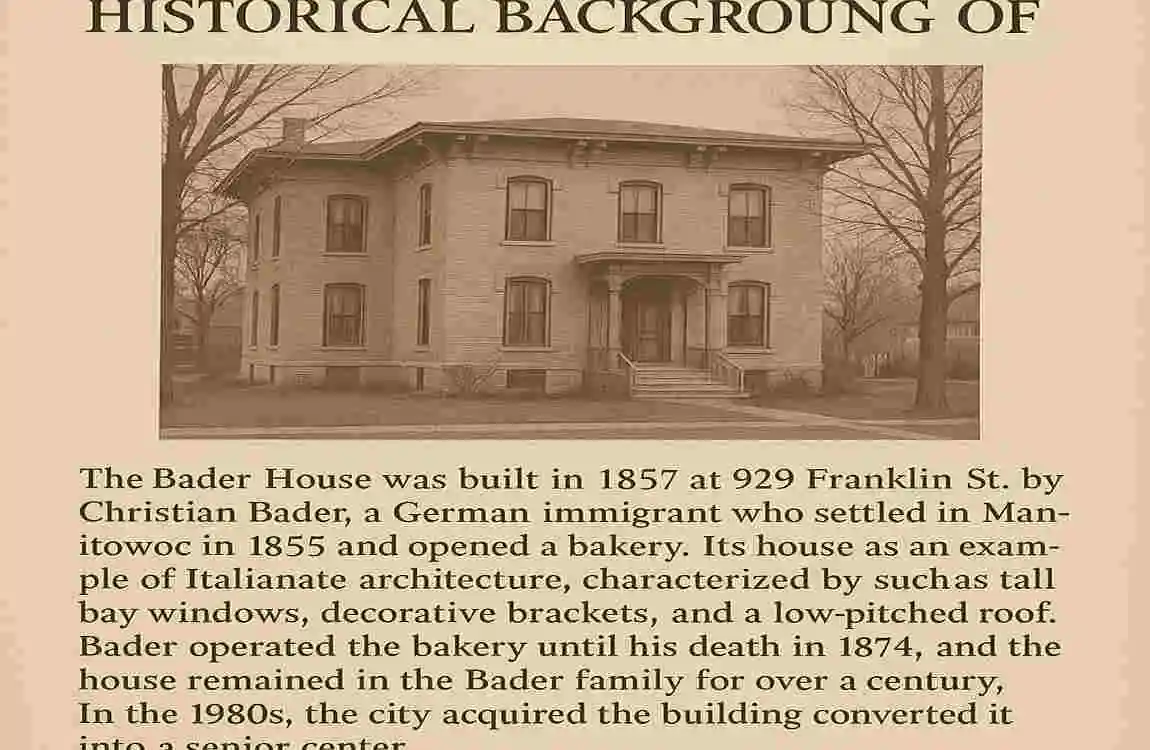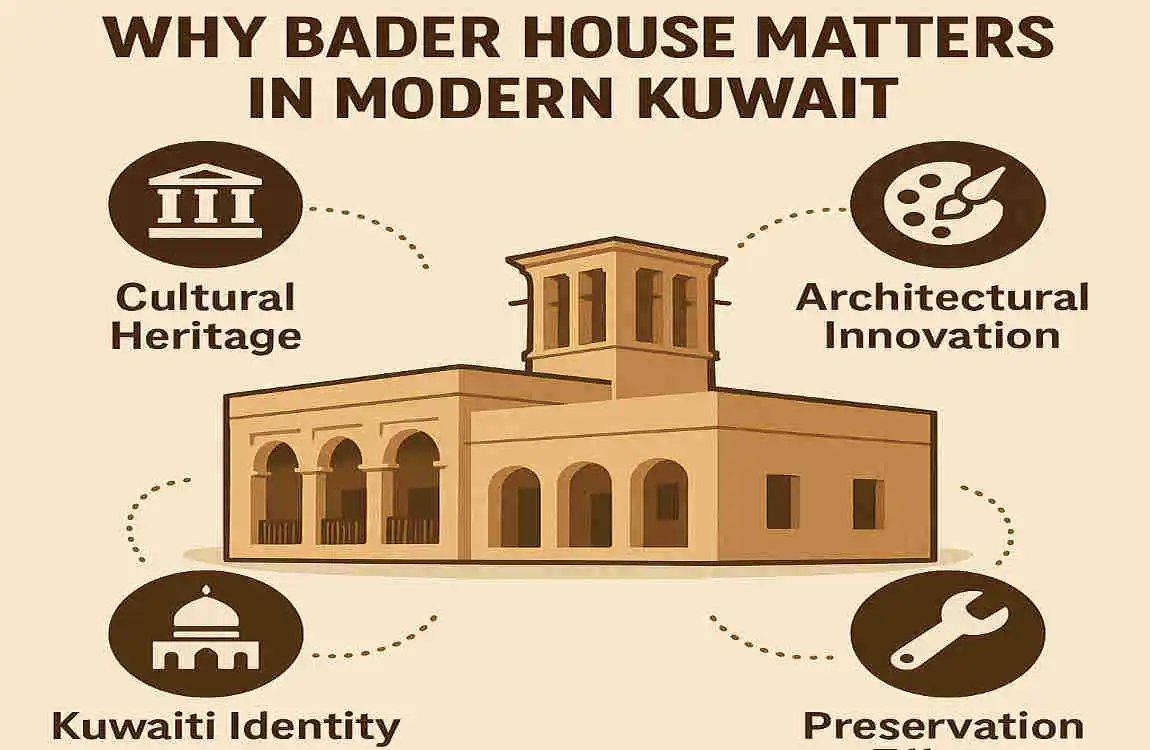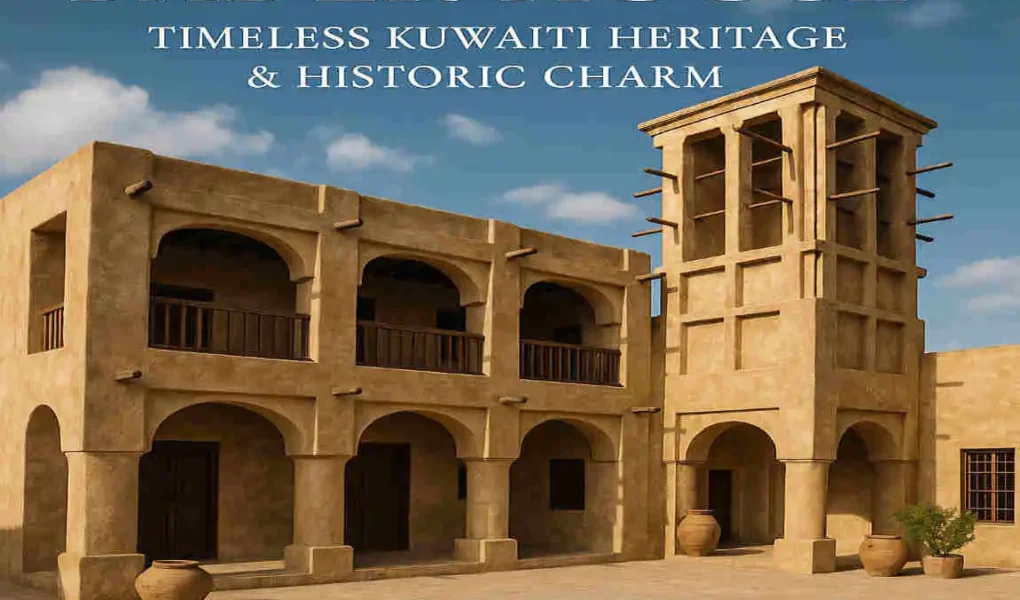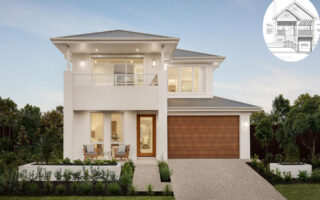Kuwait is a land of rich history, vibrant culture, and architectural wonders. Among its many treasures, Bader House stands out as a timeless symbol of Kuwaiti heritage and historic charm. This iconic structure is more than just a building; it is a testament to Kuwait’s cultural identity, architectural ingenuity, and the enduring spirit of its people.
Historical Background of Bader House

Origins and Construction
Bader House, located in the heart of Kuwait, dates back to a time when traditional craftsmanship and cultural values shaped the very fabric of society. Built during the early 20th century, the house reflects the architectural and social norms of its era. Its construction utilized locally sourced materials, such as coral stones and gypsum, which were abundant in Kuwait at the time.
The house was commissioned by a prominent Kuwaiti family, whose name it proudly carries. Over the decades, it has witnessed the ebb and flow of Kuwaiti history, standing as a silent observer to the nation’s transformation from a small pearl-diving economy to a modern state.
Notable Owners and Historical Events
Throughout its history, Bader House has been home to influential figures who played significant roles in shaping Kuwaiti society. It also served as a venue for important social gatherings, political discussions, and cultural events.
One of the most notable historical events associated with Bader House was its role during Kuwait’s pre-oil era. The house exemplified the traditional Kuwaiti way of life, where extended families lived together under one roof, fostering a sense of unity and community.
Architectural Features of Bader House
Traditional Kuwaiti Architecture Principles
Bader House is a shining example of traditional Kuwaiti architecture, characterized by practicality, simplicity, and harmony with the environment. The design of the house reflects the ingenuity of Kuwaiti builders, who adapted their techniques to the harsh desert climate.
Key External Features
One of the most striking features of Bader House is its wind towers, or “barajeel.” These towers were an early form of air conditioning, designed to capture and direct cool breezes into the house while expelling hot air. The coral stone walls, another hallmark of Kuwaiti architecture, provided excellent insulation, keeping the interiors cool during the scorching summer months.
The house’s façade is adorned with intricate carvings and geometric patterns, showcasing the artistic skills of local artisans. The use of wooden doors and windows, often embellished with decorative motifs, adds to the house’s charm.
Interior Design Highlights
Inside Bader House, the layout is centered around a majlis, or gathering space, which served as the heart of the home. The majlis was where family members and guests came together to share meals, stories, and traditions.
The interiors feature hand-carved wooden beams, colorful tiles, and traditional furnishings that reflect the aesthetic sensibilities of the time. Every corner of the house tells a story, from the ornate ceilings to the carefully designed niches for lamps and decorations.
Comparison with Other Historic Kuwaiti Houses
While many historic Kuwaiti houses share similar architectural elements, Bader House stands out for its scale, craftsmanship, and historical significance. Its preservation offers a rare glimpse into a bygone era, making it a unique cultural treasure.
Cultural and Social Significance
Reflection of Kuwaiti Lifestyle and Values
Bader House is more than just a building; it is a reflection of the Kuwaiti lifestyle and values. The house embodies the principles of hospitality, family unity, and community bonding that are central to Kuwaiti culture.
Social Gatherings and Ceremonies
In its heyday, Bader House was a hub of social activity. It hosted weddings, religious celebrations, and other vital events, bringing people together and strengthening social ties. The house’s design, with its spacious courtyards and interconnected rooms, was ideally suited for such gatherings.
Influence on Modern Kuwaiti Home Design
Even today, the influence of Bader House can be seen in modern Kuwaiti homes, which often incorporate elements of traditional architecture, such as courtyards, wind towers, and decorative motifs. The house serves as a source of inspiration for architects and designers seeking to blend tradition with modernity.
Preservation and Restoration Efforts

Challenges in Preserving Bader House
Preserving a historic structure like Bader House is no easy task. Over the years, the house has faced challenges such as weathering, urbanization, and neglect. Restoring it to its former glory requires careful planning, skilled craftsmanship, and significant financial resources.
Restoration Projects and Organizations
Several organizations, including the Kuwaiti government and cultural heritage groups, have undertaken restoration projects to preserve Bader House. These efforts involve repairing structural damage, restoring original features, and ensuring the house remains accessible to the public.
Balancing Modern Needs with Heritage Conservation
One of the key challenges in preserving Bader House is balancing modern needs with heritage conservation. While it is essential to maintain the house’s historical integrity, it must also be adapted to meet contemporary safety and functionality standards.
Impact on Tourism and Local Pride
The preservation of Bader House has had a positive impact on tourism, attracting visitors from around the world who are eager to learn about Kuwaiti history and culture. It has also instilled a sense of pride among locals, who see the house as a symbol of their heritage.
Visiting Bader House Today
Location and Accessibility
Bader House is located in a historic district of Kuwait, making it easily accessible to visitors. Its central location allows tourists to explore nearby cultural landmarks, creating a rich and immersive experience.
Visitor Experience
Visitors to Bader House can enjoy guided tours, exhibitions, and educational programs that provide insights into Kuwaiti history and architecture. The house’s well-preserved interiors and artifacts offer a glimpse into the past, making it a must-visit destination for history enthusiasts.
Nearby Cultural Landmarks
In addition to Bader House, the surrounding area is home to several other cultural landmarks, including traditional souks, mosques, and museums. Together, these sites offer a comprehensive view of Kuwait’s rich heritage.
Bader House in Arts and Media
Depictions in Literature, Film, and Art
Bader House has been featured in numerous works of literature, film, and art, often portrayed as a symbol of Kuwaiti identity and resilience. Its timeless beauty and cultural significance make it a popular subject for artists and writers.
Role in Cultural Events and Festivals
The house also plays a prominent role in cultural events and festivals, serving as a venue for exhibitions, performances, and other activities that celebrate Kuwaiti heritage.
Why Bader House Matters in Modern Kuwait

Strengthening National Identity
Bader House is a powerful reminder of Kuwait’s rich history and cultural roots. By preserving it, Kuwaitis can strengthen their national identity and pass on their heritage to future generations.
Educational Importance
The house serves as an educational resource, teaching visitors about traditional Kuwaiti architecture, lifestyle, and values. It inspires a deeper appreciation for the country’s history and culture.
Inspiration for Sustainable Architecture
Bader House also offers valuable lessons for sustainable architecture. Its design, which incorporates natural ventilation and locally sourced materials, demonstrates how traditional techniques can be adapted to modern needs.
Bader House FAQ (Frequently Asked Questions)
What is Bader House?
Bader House is a historic building in Kuwait that symbolizes traditional Kuwaiti architecture and cultural heritage. It was built during the early 20th century and is known for its unique design, historical significance, and role in preserving Kuwaiti traditions.
Where is Bader House located?
Bader House is situated in Kuwait’s historic district, making it easily accessible to visitors. Its exact location is often included in cultural tours, so check with local guides or tourism resources for directions.
Why is Bader House important?
Bader House is important because it:
- Reflects traditional Kuwaiti architecture.
- Serves as a cultural and historic landmark.
- Offers insights into the lifestyle, values, and traditions of Kuwait’s past.
- Acts as an educational site for heritage preservation and sustainable architecture.
What are the key architectural features of Bader House?
Some of the key architectural features of Bader House include:
- Wind towers (barajeel): An early form of natural cooling.
- Coral stone walls: Providing insulation against the desert heat.
- Majlis (gathering space): A central area for family and social gatherings.
- Intricate wooden carvings and patterns: Showcasing local craftsmanship.
- Courtyards: Open spaces that promote ventilation and light.
Can I visit Bader House?
Yes, Bader House is open to visitors. Many people visit to explore its historic architecture, learn about Kuwaiti culture, and participate in guided tours or exhibitions. It’s always a good idea to check the operating hours and availability of tours before visiting.
Are there any entry fees for Bader House?
Entry fees may vary depending on whether you’re visiting as part of a guided tour or during a special event. Some days may offer free admission, especially during cultural heritage festivals. Contact local tourism offices or the site itself for updated pricing information.
What can I expect during a visit to Bader House?
When you visit Bader House, you can expect:
- Guided tours that explain its history, architecture, and cultural significance.
- Exhibitions displaying artifacts, photographs, and traditional Kuwaiti items.
- Opportunities to learn about traditional Kuwaiti life and architecture.
- A peaceful and immersive experience that transports you to the past.
What materials were used to build Bader House?
Bader House was constructed using materials native to Kuwait, such as:
- Coral stones and gypsum: For walls and insulation.
- Wood: For doors, windows, and decorative beams.
- Clay and mud: Commonly used in traditional Kuwaiti construction.
These materials were chosen for their availability and ability to withstand the desert climate.




